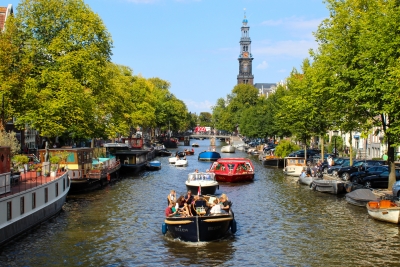
The 2010 year saw the inclusion of Amsterdam’s canal ring area, built during the Dutch Golden Age in the 17th Century-the Prinsengracht, Keizersgracht, Herengracht and Jordaan-on the UNESCO World Heritage Site list.
Herengracht is the first of the three major canals. This is best known for the Golden Bend wherein you will find many of the double-wide mansions, coach houses, and inner gardens. The other notable canal in Amsterdam is the Keizersgracht. It is the second widest of the three major canals that comprise the Seventeenth-century canal ring area of Amsterdam inside the Singelgracht. The canal is named after the Holy Roman Emperor – Maximilian I. Finally, the longest of the main canals is the Prinsengracht. The canal is named after Prince of Orange.
It comprises a network of canals to the west and south of the historic old town and the medieval port that encircled the old town and was accompanied by the repositioning inland of the city’s fortified boundaries, the Singelgracht. This was a long-term programme that involved extending the city by draining the swampland, using a system of canals in concentric arcs and filling in the intermediate spaces. These spaces allowed the development of a homogeneous urban ensemble including gabled houses and numerous monuments. This urban extension was the largest and most homogeneous of its time. It was a model of large-scale town planning, and served as a reference throughout the world until the 19th century.
Picture Credit : Google

